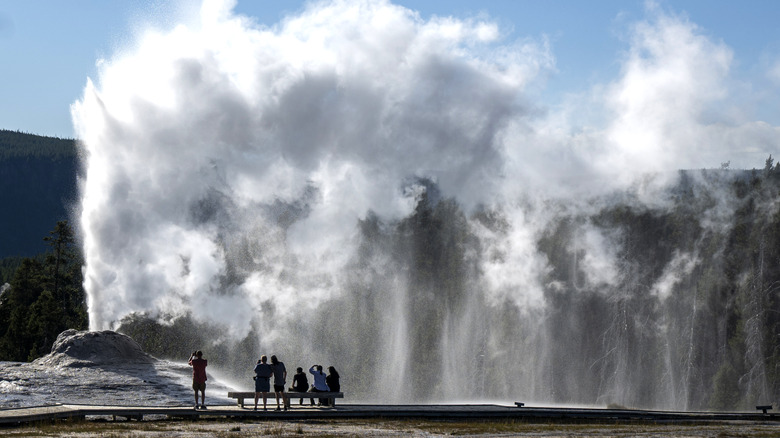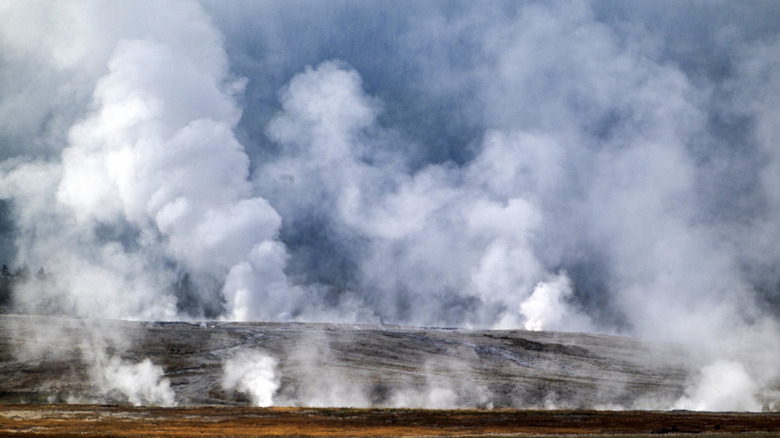Yellowstone Hydrothermal Explosions Explained: Why & How Often Do They Happen?
There's loads to see and do at Yellowstone National Park, hence why it's been labeled a must-visit travel destination for years. The massive, active volcano is the home of breathtaking scenery, all kinds of wildlife, and Yellowstone's signature striking springs. If you bring your phone along, there are several key apps you could use here or at any other national park to enhance the experience. Unfortunately, sometimes a visit to Yellowstone can be a bit scary, like when you think you're in for a geyser display, only to be hit with something far more dangerous. These are Yellowstone's hydrothermal explosions.
Hydrothermal explosions occur when boiling water erupts from the ground due to a sudden increase in pressure. Along with the hot water, rocks, dirt, and other debris can be launched into the air, creating quite a hazard for those nearby. In the case of Yellowstone's hydrothermal explosion events, they're often thanks to it having a rather shallow hydrothermal system. Liquid water beneath the surface turns to steam, and silica can clog hot water conduits, leading to this pressure buildup and eventual booming release. Average explosions can occur every few years, while smaller, less noticeable ones can happen yearly. Larger ones aren't likely to happen for hundreds or even thousands of years.
Thankfully, even though hydrothermal explosions can present a legitimate danger to those visiting Yellowstone, you're not likely to be harmed by them.
Scary as they are, hydrothermal explosions rarely cause harm
On paper, you might imagine hydrothermal explosions are a big issue for Yellowstone and its tourists. After all, a massive ground explosion that shoots out hot water and rock doesn't sound like a positive highlight of a family vacation. When Yellowstone's Porkchop Geyser famously exploded in 1989, it sent rocks flying as far as 215 feet beyond the crater. That, coupled with the suddenness of these events, may make them seem like cause to have Yellowstone closed for visitors. In reality, there's not much to worry about when it comes to them.
The truth of the matter is, the probability of injury due to a hydrothermal explosion is considerably lower than the odds of such an eruption happening in the first place. It's possible massive crowds will be present and in the danger zone when one goes off — as was the case when the July 2024 explosion occurred — but this isn't always the case. If you are visiting Yellowstone and want to protect yourself as much as you can from a hydrothermal explosion, it's best to remain on designated trails and be mindful of your surroundings and the ground beneath you.
Hydrothermal explosions at Yellowstone are dangerous and not to be taken lightly. At the same time, the odds of seeing one, let alone being injured by one, are incredibly low, so chances are you and your loved ones won't have to worry about dodging one on your next trip to the iconic park.

